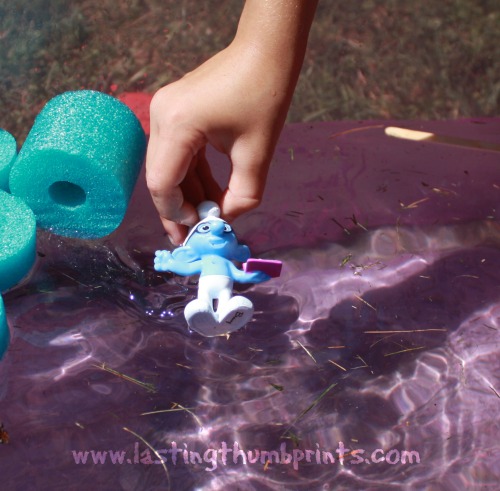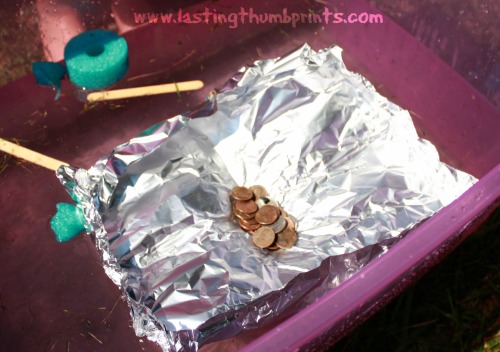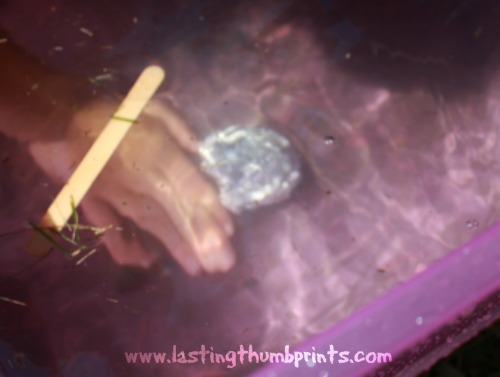Today I’m sharing the first post in a new series on Homeschooling with Your Noodle. Your pool noodle that is. Right now is a great time of year to find pool noodles at a reduced price during end-of-season sales. You can also typically find them at your local dollar store for $1 during the summer.
We’ve been having fun using pool noodles creatively during our school time. Of course, we’ve been having fun with them outside of our structured learning time as well. If you don’t want to miss any posts in the series, be sure to sign up for email updates. It’s going to be a lot of fun!
What better way to introduce the concepts of buoyancy and density than with pool noodles! You can really tailor this idea to fit a wide range of ages. Our 13 year old joined in some of the conversation, but most of the activities we did were focused on our younger students. I wish I had more pictures, but we were just having too much fun and I didn’t want to interrupt the natural flow of learning that was taking place.
What we used:
- 1 pool noodle
- water
- empty container/tub
- various household items (that you don’t mind getting wet)
We started by talking about why pool noodles float and why they can still float with human weight on them. I introduced the term buoyancy and how it compares to gravity. So we just had to do a “sink or float” activity with other objects from around the house. We used things like a rubberband, penny, spoon, and a paper clip. The kids also picked up things from around the yard like walnuts, pinecones, and rocks.
Here’s a little known scientific fact for you…smurfs do not float. I’m glad we could be a part of solving one of life’s many mysteries… 😉
We also talked about density and whether there was a way to change an object’s buoyancy. We watched pennies float on pool noodle pieces that would normally sink on their own. Then I pulled out some aluminum foil to talk about surface area and how that can change buoyancy.
This was a fun experiment and the kids really got into it. (Perhaps growing a baby is taking up all my brain cells right now, but I couldn’t think of a good way to do this with pool noodles.) A handful of coins that would normally sink on its own was able to float on a large piece of aluminum. We talked about boats and how many times the cargo they carry would sink if thrown overboard. Then it was time to change the surface area and see what would happen…
The coins sank when we made the surface area smaller. It was pretty fun to watch! I know the kids may not retain all the vocabulary, but the hands on activities really made a difference in their basic understanding of the concepts.
And, of course, the inevitable happened. Rub-a-dub-dub, three kids in a tub!
Have you used pool noodles in your homeschool? I’d love to hear about it!








energy says
It is rather interesting that Warren Buffet owns
10% of the Chinese Greely electric and hybrid car company, and he is wanting to get a greater portion of
it. Some of the drawbacks of these systems is that it is not always dependable.
However even though many renewable power choices are best suited for large scale generation, wind turbines have become
successful when reduced to your size ideal for home
wind power and they are capable of making a sizable contribution for your household’s electricity requirements.